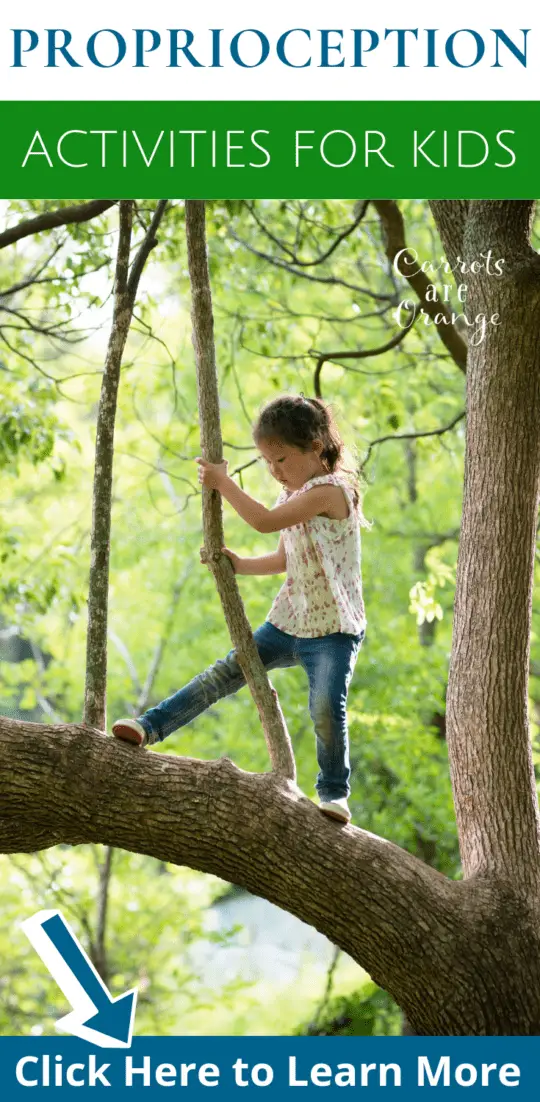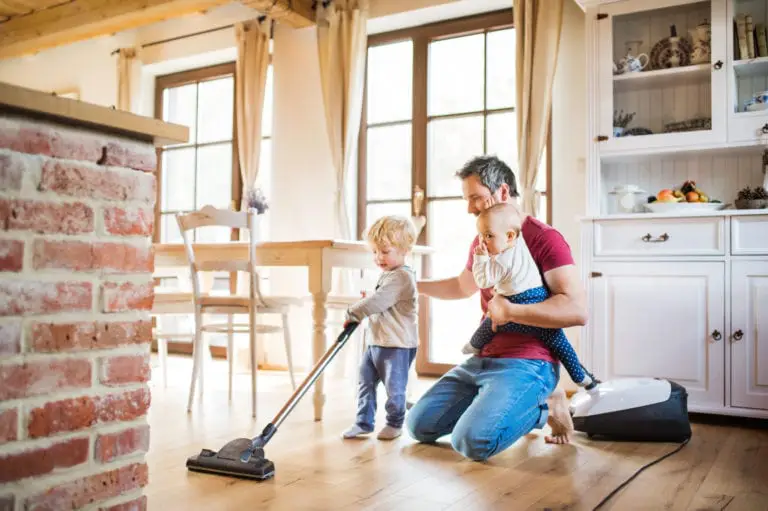If Occupational Therapy 101 For Parents was my campaign platform, I must hold true to the single promise that I made in its conclusion: to provide my readers with some useful nuggets – proprioception activities for kids – to try at home.
The challenge with this endeavor is offering advice that can be universally applied to children who are delayed in skill acquisition, or in need of help to simply have a happier existence.

The Basic Five Senses
Everyone knows the basic five senses: sight, sound, touch, taste, and smell. These senses give awareness of surroundings and fall under the umbrella of the Nervous System. Their historic significance has been allowing living creatures to detect and avoid danger.
Imagine being a hungry caveperson taking a bite of a rotten animal carcass. Bleck.
Imagine waking up in a teepee or wooden hut and smelling or seeing smoke nearby.
Imagine walking along a trail and hearing a snake rattle. What would you do? React, of course.
Sensory experiences are also the main source of daily pleasures: smelling roses, tasting good wine, butterfly kisses.
Are you smarter than a kindergartener?
Whereas the main five senses help one to understand what’s “out there”, there are other sensory systems that help one to understand the body itself. This information is definitely more abstract, which is probably why kids don’t learn it in kindergarten… yet. Our kids will inevitably know more than us about technology, so let me at least help you stay ahead of them on this front.

Hidden Senses – Proprioception Activities for Kids
Three additional sensory systems impact the way we perceive and act.
Let me explain:
Proprioception
With receptors located in the joints and muscles, this sensory system gives information about body positioning in space. It allows you to make a predictable foul shot in basketball, find a light switch in the dark, run up a set of stairs, and apply mascara without stabbing yourself in the eyeball. Input comes from deep pressure (pushing) or traction (pulling) on the joints. The effect is like outlining a picture with a black marker or drawing a box around an important note. It provides clarity, organization, and security. Proprioceptive input is extremely effective in helping to achieve a regulated arousal state. More on that, later!
Vestibular
The vestibular system is responsible for processing movement. It can alert you to reach your arms outward if you trip and start to fall. It can alert you to tighten your abs or your grip on your handlebars when you suddenly accelerate on a bike. It can tell you
when an airplane is making a turn or starting its descent.
Interoception
This system was the most recent to be defined. It is the system that interprets physiological body functions, like hunger, thirst, and the need to use the bathroom. Therapists are starting to learn strategies to support a dysfunctional
the interoceptive system, but, for most, it is still a work in progress.
How do these systems support learning?
There are two main reasons that sensory systems are important in learning:
- They give information about the traits and properties of things to add personal meaning
and relevance and - The right combination of sensory experiences balance the nervous system so that the
body and brain are ready for learning.
You know what? Read #2 again. I will explain nervous system regulation in more detail another
time, but for the purpose of this post, just understand #2.

The Magic Wand
Parents who have kids with special needs, identified or not, crave to have a little magic up their sleeves, right? Abracadabra, make my kid stop moving! Alakazam, make my kid focus! Make my kid stay on his feet! Make my kid understand! Make my kid calm down! Make my kid feel motivated!
Okay, so there is no magic wand (sorry…), but if you’re stuck or stumped or stressed, you almost can’t go wrong with proprioceptive input. In the world of sensory processing, there are things that can stimulate and things that settle. There are things that alert and things that calm.
When you choose proprioception, you can get the desired effect no matter what!
Proprioception Activities for Kids
Okay. The three BEST areas for Proprioception activities for kids are the following:
- Heavy work chores (no need to feel guilty!) such s carrying laundry, unloading the dishwasher,
vacuuming carpets, sweeping the driveway - Outside play such as climbing trees, running across the yard, using sidewalk chalk, riding a
bicycle, swimming, jumping on a trampoline - Basic exercises such as push-ups, wall pushes (literally), squats, sit-ups, handstands
- Kitchen tasks such as mixing the dough, cutting vegetables, pouring milk, wiping counters
None of us has all the answers, and, unfortunately, there is no magic wand to resolve our woes. But if we keep open minds and integrate small bits of new learning into our daily practices, we can have a big impact on how our kids see themselves and the great big world around them.
Today’s learning: the power to proprioception!
